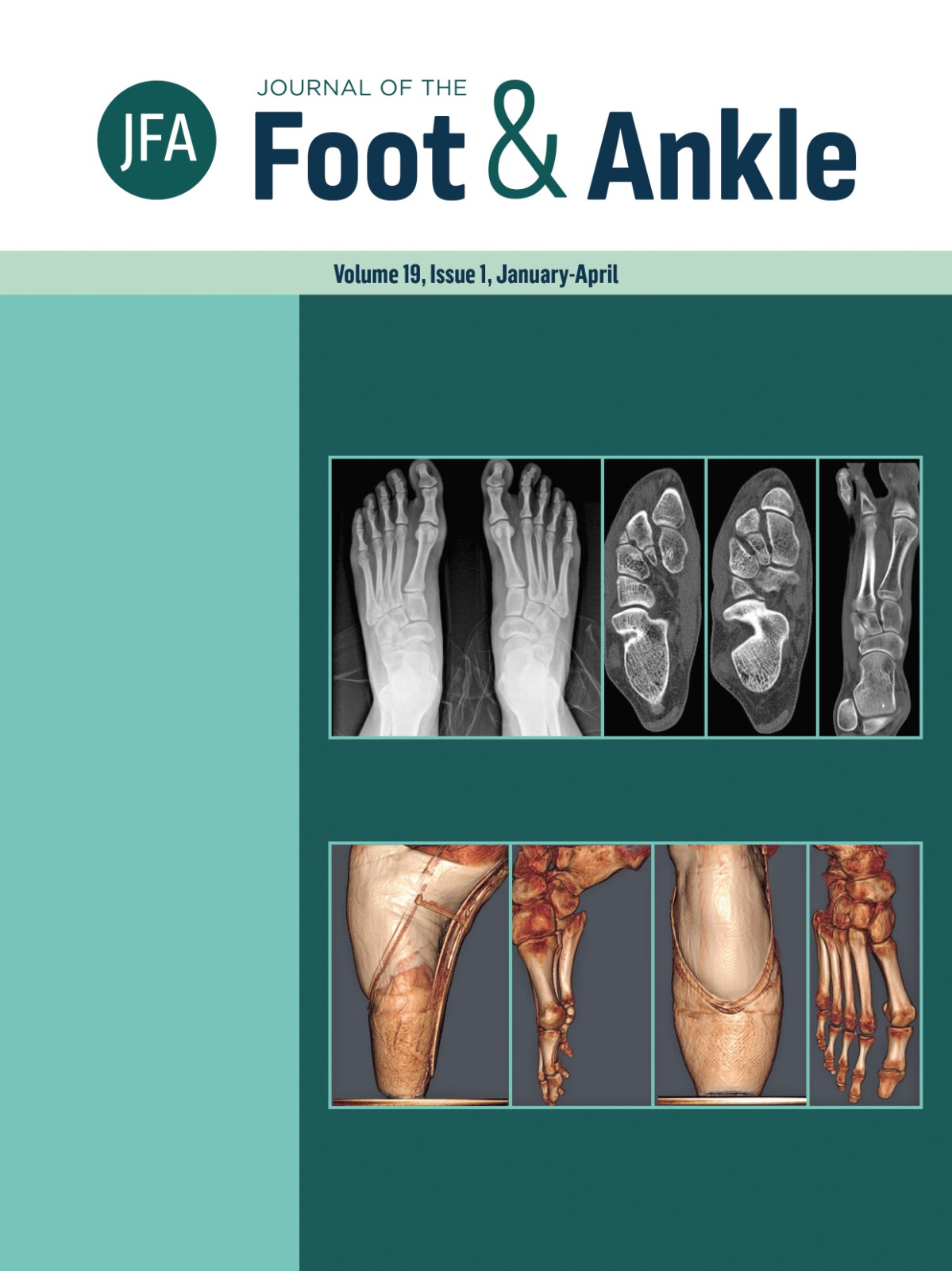Early complications associated with the posterolateral surgical approach in posterior malleolar fractures
DOI:
https://doi.org/10.30795/jfootankle.2025.v19.1838Keywords:
Ankle; Ankle fractures; Fracture fixation; Surgical wound dehiscence.Abstract
Objective: Determine the complication rates following the posterolateral surgical approach in posterior malleolar fractures and evaluate possible associations with comorbidities. Method: Twenty-six adult cases of ankle fractures involving the posterior malleolus were treated with a posterolateral surgical approach. All cases were classified according to Lauge-Hansen, Haragushi, and Bartoníček classifications. Data analysis sought the relative frequency of complications, the statistical association between comorbidities, corticosteroid use, external fixators, previous skin lesions, and smoking. Results: The incidence of postoperative complications was 38.4%. No statistically significant association was found between the development of postoperative complications and comorbidities, smoking, or corticosteroid use. In 50% of the cases, the fractures occurred during stage 3 supination external rotation, according to the Lauge-Hansen classification. Additionally, 3% of patients developed flexor hallucis longus adhesion, and 11% developed equinus deformity. Conclusion: Overall complication rates after the posterolateral surgical approach in posterior malleolar fractures were 38.4%. No association was found between comorbidities or previous skin lesions and wound dehiscences. Additionally, 11% had postoperative Achilles tendon shortening. Level of evidence: IV; Therapeutic studies; Case series.
Downloads
Published
How to Cite
Issue
Section
License
Copyright (c) 2025 Journal of the Foot & Ankle

This work is licensed under a Creative Commons Attribution-NonCommercial 4.0 International License.







